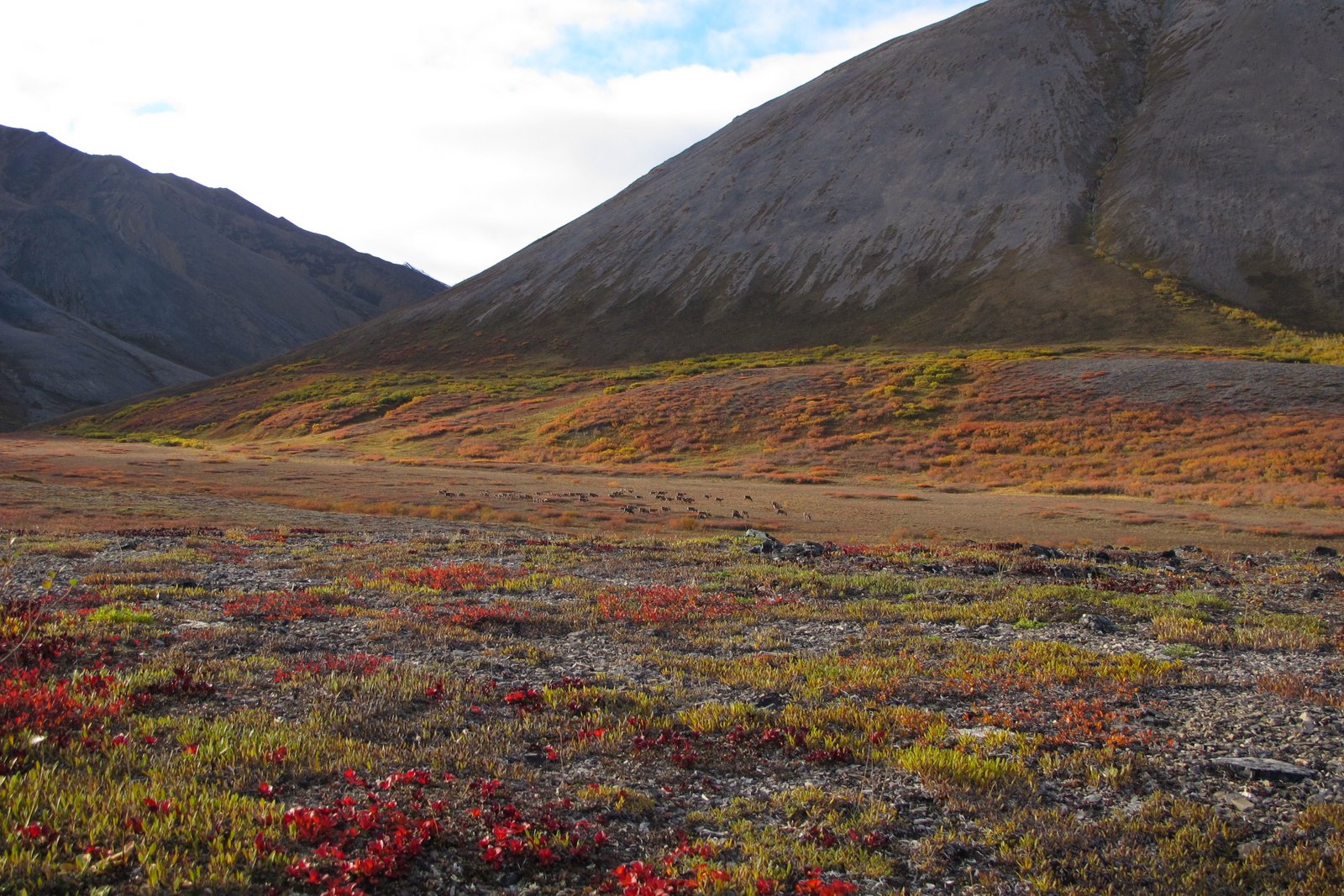After delay, planning resumes on a controversial 200-mile road through Arctic Alaska
Critics say the road would would harm wildlife habitat and threaten traditional Alaska Native communities.

Plans for a new 200-mile road cutting through the foothills of the Brooks Range in Alaska’s Arctic are back on track now that a funding problem has been resolved, a federal official overseeing the environmental review of the project said last week.
A decision on the Ambler Mining District Access Project, a proposed road connection that would reach now-isolated copper mine sites in northwestern Alaska, could come in about a year’s time, said Tina McMaster-Goering of the Bureau of Land Management
“We had been on hold pending funding,” McMaster-Goering said. But now that the state of Alaska has released money to the BLM, the federal agency has resumed its work on an environmental impact statement for the project, she said.
McMaster-Goering made her comments at the annual meeting of the Western Arctic Caribou Herd Working Group, an advisory panel representing northwestern Alaska communities, hunting organizations and conservationists.
The Western Arctic herd is, for now, the largest caribou herd in North America. The Ambler highway would pass directly through the herd’s habitat. The project is highly controversial, and members of the Western Arctic Caribou Herd Working Group have been among the harshest critics.
The road would be built and financed by the Alaska Industrial Development and Export Authority, a state economic development agency. AIDEA is the project’s sponsoring entity, and its application has kicked off the environmental impact statement process. The BLM is the lead agency for that environmental impact statement, though AIDEA , as the applicant, is required to provide some of the funding for the study.
For a few years, Alaska’s budget problems had prompted a delay in that work.
Gov. Bill Walker, in a 2014 administrative order, had frozen $3.6 million in previously allocated funding for AIDEA’s planning, along with funding for some other major construction projects. At the time, Walker said the freeze was necessary because of the state’s budget deficit at the time. But on Nov. 26, in one of his last official acts before his term expired six days later, Walker released the allocation for the Ambler project; he said that the state’s financial position had improved enough to allow that work to proceed.
“The Ambler Mining District provides an immense opportunity for economic development in Northern Alaska, and moving through the EIS process is an important step to make sure that happens,” Walker said in a statement. “Now that Alaska is on firmer financial ground, it is appropriate to spend money on this project.”
The BLM’s website for the project says the draft environmental impact statement was previously expected by March of 2019, but had been put on hold, and that the final environmental impact statement was expected to be completed by Dec. 30, 2019.
Under the Trump administration’s Department of the Interior policy, environmental impact statements are supposed to be completed in a single year, said Lesli Ellis-Wouters, a spokeswoman for the BLM’s Alaska office.
At the Western Arctic Caribou Herd Working Group meeting, McMaster-Goering gave the revised schedule for the upcoming draft environmental impact statement.
“What we’re contemplating is to have a draft out for public review in about eight months” she said. That would put the draft EIS release in late summer or early fall, she said. A final environmental impact statement and a record of decision would follow sequentially after that, she said.
At last week’s meeting, members of the Western Arctic Caribou Herd Working Group continued their criticisms of the project, which they say would fragment and degrade habitat for all types of wildlife and threaten traditional Native communities.
Jake Jacobson, representing hunting guides, said the road, if approved, would “inevitably” be used to expand mining. “I fear that a road like this is going to open up more and more development,” he said. “Basically, I don’t like the idea of a road like this at all.”
“That road is going to impact the Seward Peninsula, the movement of caribou,” said Tom Gray, of Nome, who represents the region’s reindeer herders.
Not everyone was negative about the road idea idea. Bill Bernhardt, representing the villages of Ambler, Shugnak and Kobuk — villages closest to the proposed copper mines — said the road and the mining development that it would make possible offer economic opportunities.
“We’re in a changing world,” Bernhardt said. Trilogy Metals Inc., the company seeking to develop Ambler district mines, just employed a lot of the region’s people during the last field season, he said. “You need to find work. We’re just not living off the land anymore.”
The Western Arctic Caribou Herd, with a population estimated in 2017 at 259,000 animals, has likely held steady through 2018, biologists told the working group. Numbers are far below the 490,000 peak population reached in 2003, but an improvement from the 201,000 estimate for 2016. “We’ve stabilized, possibly a little dip” since last year, said Alex Hanson of the Alaska Department of Fish and Game.
A more precise number was not available. A population census for 2018 was not conducted because of problems with the aerial photography system the department now uses, Hanson said. A full census is expected next year.